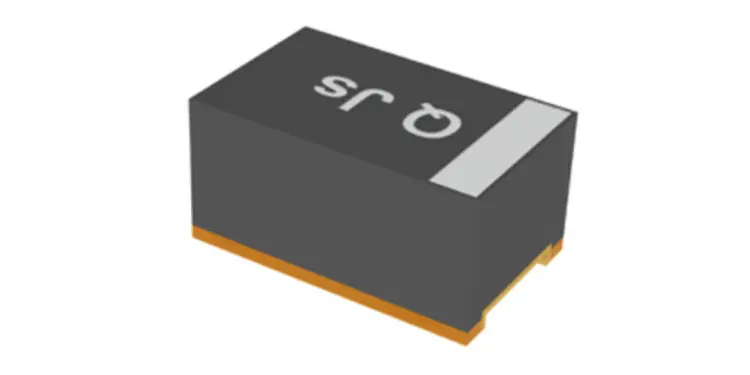Small is never really small enough, for example just look at how USB connectors have evolved over the years. While phones are getting bigger and bigger screens, they are getting ever thinner. Seeking the continuous leadership position KEMET introduced the new tantalum polymer ultra-thin face down construction with the new EIA3216-08 in 47uF6,3V and 22uF16V.
In order to support miniaturization, reliability and high volumetric efficiency requirements in smartphones, SSD, wearable devices and other trends, KEMET has released to market the new TF Ultra Thin Facedown Series.
The tantalum polymer SMD are solid state capacitors that demonstrate no wearout mechanism when operated within their recommended guidelines. Unlike their MnO2 counterparts, polymer capacitors don’t need to be derated as aggressively. Under most conditions of consumer electronics devices, polymer capacitors only need about 10% derating.
KEMET recommends that designers consider a voltage derating, according the Table 1 maximum steady state voltage. The new TF A08 offerings: 47uF/6,3V and 22uF/16V capacitors are well suitable for usage up to 5V and 12V voltage lines respectively, in applications limited to a maximum temperature of 105ºC.
Tantalum polymer capacitors show high capacitance stability within the operational temperature range (-55ºC – 105ºC), and improved capacitance roll off with frequency over other alternatives. In comparison with ceramic capacitors, the polymer technology has no aging (% of capacitance decay due to changes in the crystalinne structure of the Ba2TiO3) and show no capacitance lost with voltage VCC (voltage coefficiency capacitance). These advances allow the designers to overcome miniaturization challenges by reducing piece count, saving board space and reducing overall costs.
The new capacitance offerings are qualified according KEMET specification and show electrical stability beyond the life requirements of 105ºC, Ur up to 1000h . In the figure 3 are shown the: (a) capacitance drift (%), (b) ESR (equivalent series resistance) and (c) the DC leakage performance at 105ºC and rated voltage up to 2000h, for the TF 08A 22uF16V 200mOhm.



The new 3216-08 offerings in KEMET Polymer Ultra Thin Facedown portfolio present potential solutions to designers where space board saving, high volumetric efficiency/miniturization and reliability are required.

































